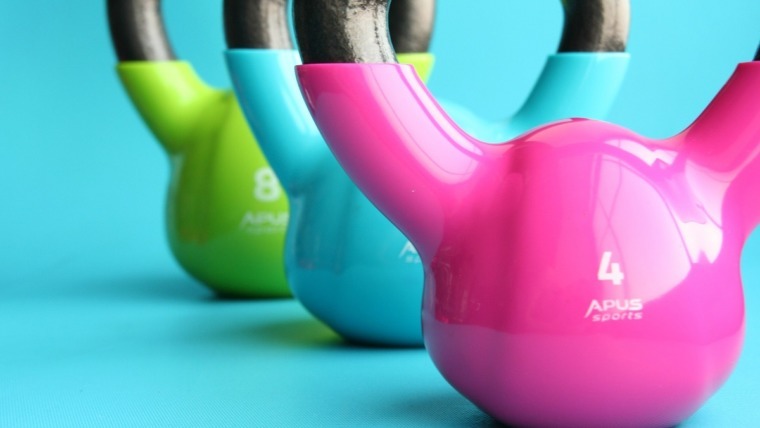
The Most Important Steps From A Health Professional
Tips & Tricks For A Fitter Life
Written by Michael Dermansky – Senior Physiotherapist – MD Health
Our lives are complicated. We all have our own pressures, demands, circumstances and stages of our lives, particularly in times of uncertainty that can make “life” overwhelming. But, from a health professional’s perspective, there are some basic tips and tricks that you can make part of your life that can always set you on the right path, no matter where your life is heading
Be Stronger
In a recent systematic review released earlier this year by Victoria University, strength training was again proven to be extremely important in maintaining muscle mass and improving bone mineral density throughout the lifespan. As health professionals, the biggest limiting factor that we find that stops people from doing the things that they love and enjoying the life they deserve is the lack of strength to be able to do these tasks, (rarely their lack of fitness).
In general, I tend to find women, in particular from their late 20’s to their early 40s, do not particulate in strength training because they are either too busy (as the demands of life get in the way) or it’s not seen as important. Either one of these reasons means that the demands of life, such as lifting young children, walking to work or enjoying your holiday trekking the Grampians are much harder work than they need to be.
The American College of Sports medicine continues to recommend, that strength training should be performed:
- 2 x a week, involving the major muscle groups (30-45 minutes)
In general, your initial program should be at least 6-7 weeks to improve the strength in the muscles (Ideally 13 weeks) before seeing the real benefits of strength training
However, this is not the limit of the benefits of strength training.
Management of diabetes and glucose tolerance – Improving your muscle mass not only increases the number of receptors that pick up glucose and pull it away from the bloodstream due to more muscle fibres but the number and efficiency of these receptors improve, enhancing your glucose tolerance and helping manage diabetes.
Better overall cancer management – It has long been shown that people who are stronger and do regular strength training survive better if diagnosed with cancer. Strength training improves the survival rate, the recovery from any surgery, management during chemotherapy or radiotherapy and overall recurrence. This is particularly so for breast, colon and prostate cancers.
Better memory and brain function – People with higher grip strength (a proxy for overall body strength) performed higher in memory tests and reaction time. In a study, those who lifted weights at least once a week showed significant improvements in cognitive functions such as attention. It seems to be because strength training releases Osteocalcin from the bones. This improves the size and connectivity of the hippocampus, which has a major role in memory and learning.
In addition, strength training is linked with higher self-esteem and a feeling of being more capable in all stages of life. Our brain has an unconscious sense of health and the state of our muscles and bones system, which makes us feel we “can or can’t do something”. As a result, strength training is a powerful tool against anxiety and depression. Sadly though, because of a more sedentary lifestyle, adults today are weaker than adults of the 1980s, with further weakness in the upcoming generation.
Get Started
Often, the hardest step in any journey is the first one. In Jack Canfield’s book The Success Principles, he discusses to get any task done in life, the order of events is Ready, Fire than Aim.
When you take action and get started, the feedback tells you whether you are on the right track or not. The most important step from there is not to stop, but to fail forward. Learn from the feedback as a result of your action and adjust what you need to do to move towards your goal.
When we make plans for our business, we have a 3-year goal, but often don’t go beyond planning the next 3 months. I can put in a very concentrated effort to achieve an outcome and clear direction for the next 3 months but find it very hard to plan beyond this (although I have tried on many occasions) because life and circumstances have a very different plans. Then I adjust my plans based on what is actually happening and move towards my next 3-month goal.
Since adopting this approach, I have gotten more done with less stress and anxiety than at any previous times in my life
Be Consistent
Sometimes the issue that we have is not that we have the wrong plan, skills or directions, it’s just that we haven’t done it for long enough or been as consistent as we should have been.
In our practice, the most common problem with strength training is that clients are not consistent and don’t put in the time and effort they require to see results.
The COVID pandemic and lockdowns for the last 2 years have really highlighted this strongly. Over this period, many of our client’s exercise routines have been disrupted and they have lost strength and just don’t feel the same as they used to. This did not happen all at once, but slowly over time as lack of strength training started as a few weeks, then months then a couple of years.
Since the beginning of 2022, a lot of our clients have had the ability to train consistently once again, without disruption and the results are clear. With consistency (2 times a week, for a minimum of 13 weeks), clients have gotten stronger once again, life has become easier and they are starting to do the things they love. I am very excited to congratulate these clients and see the direction their life has taken.
We have also seen the opposite. Clients that attend sporadically, are not consistent and don’t give themselves enough time to see results. I have to have a very different conversation with these clients, which is not often pleasant for either side. Unfortunately, the results would be very different, if they put the effort in and were consistent with their work.
Ask For Help When Needed
Again, in Jack Canfield’s book The Success Principles, he discusses that for most things in life, someone has usually done it before. Success leaves clues, in the form of books, articles, blogs, advice or presentations. People who are successful want usually tell other people about it and are happy to share their knowledge with others. You just need to know where to look and not be afraid to ask.
A few years ago, although I was consistent with my exercise routine (doing Clinical Pilates twice a week and HIIT training once a week), I wasn’t familiar with classic strength and conditioning training. I needed help.
I spoke to and started working with a strength and conditioning trainer who worked to make me familiar with and improve in the basic lifts, such as deadlifts, squats and bench presses. The hardest step was to get over my fear and anxiety of looking silly for asking for help and being a beginner once again.
As a result, classic strength and conditioning is now a part of my normal strengthening routine and I teach this to clients with great results.
Life will also get complicated and sometimes overwhelming. However, these 4 simple tips and tricks, based on experience and knowledge are a good step in making life manageable and moving towards doing the things that you love and enjoy
Tips & Tricks For A Fitter Life Tips & Tricks For A Fitter Life Tips & Tricks For A Fitter Life Tips & Tricks For A Fitter Life



